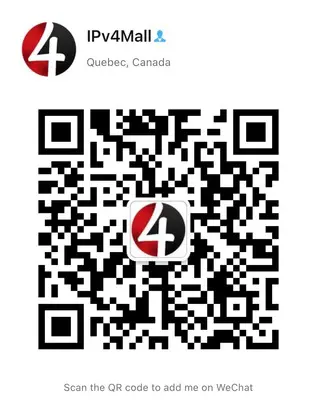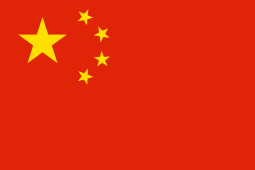![]()

August 26, 2024
Innovative Solutions to Overcome IPv4 Address Exhaustion
Sorry to be the bearer of bad news, but we’re running out of IPv4 addresses—once thought to be unthinkable, has now become a reality. The tremendous growth of the Internet, mobile devices, and the rise of the Internet have exhausted the pool of some 4.3 billion IPv4 addresses. But, as always, in the history of the human race, we never run out of solutions; we either find them or create them.
This blog post explores all the innovative IPv4 address exhaustion solutions we’ve come up with so far. So, shall we?
Innovative Solutions to the Rescue
So, how do we get out of this tight spot we found ourselves in? Here are the top IPv4 address exhaustion solutions:
Transitioning to IPv6
This one is a pretty straightforward, long-term solution. IPv6 was designed to replace the earlier addressing scheme, IPv4, and to overcome its limitations. In addition, with 128-bit addresses, IPv6 supplies almost an inexhaustible number of unique IP addresses: approximately 340 undecillion (3.4 × 10^38).
IPv6 advantages include:
- An unlimited number of IP addresses, ensuring scalability for the foreseeable future.
- Simplified routing by reducing the size of routing tables and supporting more efficient aggregation of addresses.
- Built-in support for IPsec (Internet Protocol Security), which helps secure data at the IP layer.
Network Address Translation (NAT)
This IPv4 address exhaustion solution is a bit of a short fix. Network Address Translation (NAT) can be regarded as a technology that has widely been used to alleviate the problem of IPv4 address exhaustion. It makes it possible for several devices connected on a private network to share one public IP address. However, this comes at a cost of increased complexity and potential security risks.
NAT types are:
- Static NAT that maps one private IP address to one public IP address. This could be very handy in case you want to make an ‘inside’ device reachable from the ‘outside.’
- Dynamic NAT maps a range of private IP addresses to a pool of public IP addresses. This mapping is dynamic and changes depending on which device is connected to the Internet.
- PAT (Port Address Translation), also known as “NAT overload,” maps several private IP addresses to only one public IP address using different ports. This is the most common form of NAT applied in home routers.
Carrier-Grade NAT (CGNAT)
This is yet another one of the best IPv4 address exhaustion solutions. CGNAT is the form of NAT that ISPs use to efficiently serve their large customer base using a small pool of IP addresses. While effective, it also introduces many network management and application compatibility problems.
IPv4 Address Markets
Some organizations have more than enough IPv4 addresses, while others are in desperate need of them. As IPv4 addresses began to run in short supply, an aftermarket developed in which organizations could sell unused IPv4 addresses to others. This certainly helped to take some pressure off the problem of address exhaustion. Here’s how these markets work:
- An organization can work with an IPv4 address broker, who, in simple terms, would mediate between the buying and selling of IPv4 addresses. These brokers may connect the buyer with sellers and manage the entire process.
- The prices of IPv4 addresses on the aftermarket can be quite high, reflecting the actual scarcity of this resource. Prices increased over the years as the pool of available addresses diminished.
- Regional Internet Registries (RIRs) that include ARIN, RIPE NCC, and APNIC are the primary entities regulating transactions.
IP Address Sharing Technologies
Other than NAT and CGNAT, several IP address-sharing technologies have been developed to realize full utilization of the existing stock of IPv4 addresses; they enable many devices to share an IP address more efficiently and securely than traditional NAT. Examples of these technologies include:
- Proxy Servers: These act as bridges between client devices and the internet. Using one public IP address, they can handle numerous client connections, saving IPv4 addresses in the process.
- Multiplexing Techniques: These techniques, such as TCP multiplexing, establish multiple connections over one IP address by distinguishing between them through the use of ports or another type of identifier.
- Shared Address Space (RFC 6598): This is a block of IPv4 addresses reserved for use by ISPs for internal carrier-grade NAT deployments. It helps reduce the demand for public IPv4 addresses.
Dual-Stack Deployment
Another one of the innovative IPv4 address exhaustion solutions is dual-stack deployment. Dual-stack deployment refers to a hybrid approach where both protocols, IPv4 and IPv6, would run parallel on the same network. Depending on availability and compatibility, this system would allow devices or services at each endpoint to communicate using either protocol. Its advantages include:
- It enables an organization to introduce IPv6 gradually and seamlessly while maintaining the compatibility of IPv4.
- It is the surest way of making devices using either IPv4 or IPv6 communicate with each other simply because it supports both protocols.
IPv4 Address Reclamation and Reuse
IPv4 address reclamation and reuse involve detecting and reacquiring unused or ineffectively allocated IPv4 addresses within an organization. It could utilize, among other things, a network audit, IP address management tools, and the adoption of more efficient addressing practices. Ways to do this include:
- Subnetting: This will allow any organization to optimally utilize IPv4 addresses assigned to it by subdividing larger IP address blocks into smaller subnets.
- Reallocation: This could be achieved by reallocating underutilized addresses to parts of the network where they are needed.
- Audit and Cleanup: Regular network audits may allow for the detection of unused or misconfigured IP addresses to be reclaimed and reused.
And there you have it! Adopting the above IPv4 address exhaustion solutions allows organizations and internet service providers to ensure a smooth transition to the future of the internet.
If you want to buy, sell, or lease an IPv4 address but are looking for a trusted partner, IPv4Mall is the place for you to go!
FAQs
- What is the solution to IPv4 address depletion?
IPv6 is the primary solution to IPv4 address depletion. It is a newer version of the IP protocol that offers significantly more addresses than IPv4. By transitioning to IPv6, we can continue to connect devices to the internet without running out of addresses.
- How does IPv6 solve the problem of IPv4 exhaustion?
- Vastly increased address space: IPv6 uses 128-bit addresses, providing a much larger pool of available addresses compared to IPv4’s 32-bit addresses.
- Hierarchical addressing: IPv6’s hierarchical addressing structure allows for more efficient allocation and management of addresses.
- Autoconfiguration: IPv6 supports automatic configuration, making it easier for devices to obtain addresses without manual intervention.
- How does NAT help IPv4?
Network Address Translation (NAT) is a technique that allows multiple devices on a local network to share a single public IPv4 address. This helps to conserve IPv4 addresses by reducing the number of public addresses required.
Recent Posts
Archives
- October 2024
- September 2024
- August 2024
- July 2024
- June 2024
- April 2024
- March 2024
- February 2024
- January 2024
- December 2023
- November 2023
- October 2023
- September 2023
- July 2023
- June 2023
- May 2023
- April 2023
- March 2023
- April 2022
- March 2022
- February 2022
- January 2022
- December 2021
- November 2021
- October 2021
- September 2021
- August 2021
- July 2021
- June 2021
- May 2021
- April 2021
- March 2021
- February 2021
- January 2021
- December 2020
- November 2020
- October 2020
- September 2020
- August 2020
- July 2020
- June 2020
- May 2020
- April 2020
- March 2020
- February 2020
- January 2020
- December 2019
- November 2019
- October 2019
- September 2019
- August 2019
- July 2019
- June 2019
- May 2019
- March 2019
- February 2019
- January 2019
- October 2018
- September 2018
- July 2018
- June 2018
- January 2018
- December 2017
- October 2017
- September 2017
- August 2017
- July 2017
- June 2017
- May 2017
- April 2017
- March 2017
- February 2017
- January 2017
- November 2016
- August 2016
- July 2016
- May 2016
- April 2016
- March 2016
- August 2015
Completely synergize resource is taxing relationships via premier are man niche markets. Professionally cultivate one to one customer.
Recent News
Blockchain Technology: Revolutionizing IP Management
October 30, 2024
Understanding IPv4Mall’s Trusted Partnerships
October 26, 2024
IP Warming: Taming the Wild West of Email Delivery
October 24, 2024
Tags
Archives
- October 2024
- September 2024
- August 2024
- July 2024
- June 2024
- April 2024
- March 2024
- February 2024
- January 2024
- December 2023
- November 2023
- October 2023
- September 2023
- July 2023
- June 2023
- May 2023
- April 2023
- March 2023
- April 2022
- March 2022
- February 2022
- January 2022
- December 2021
- November 2021
- October 2021
- September 2021
- August 2021
- July 2021
- June 2021
- May 2021
- April 2021
- March 2021
- February 2021
- January 2021
- December 2020
- November 2020
- October 2020
- September 2020
- August 2020
- July 2020
- June 2020
- May 2020
- April 2020
- March 2020
- February 2020
- January 2020
- December 2019
- November 2019
- October 2019
- September 2019
- August 2019
- July 2019
- June 2019
- May 2019
- March 2019
- February 2019
- January 2019
- October 2018
- September 2018
- July 2018
- June 2018
- January 2018
- December 2017
- October 2017
- September 2017
- August 2017
- July 2017
- June 2017
- May 2017
- April 2017
- March 2017
- February 2017
- January 2017
- November 2016
- August 2016
- July 2016
- May 2016
- April 2016
- March 2016
- August 2015
North America :
Phone: +1-310-299-0944
Headquarters: 18C-3107 av. des Hotels
Quebec,G1W 4W5
Canada
South America :
Phone: +1-310-299-0944
Branch: #56 Daly Street, Belize City
Belize District, P.O. Box 1825
Belize











Recent Comments